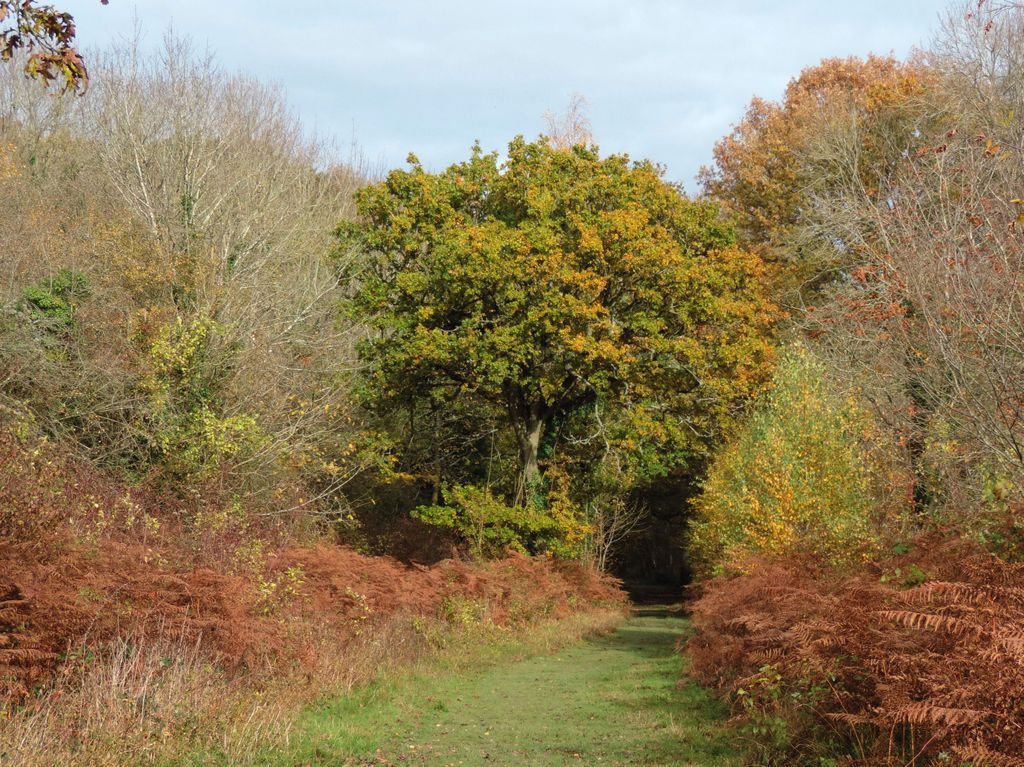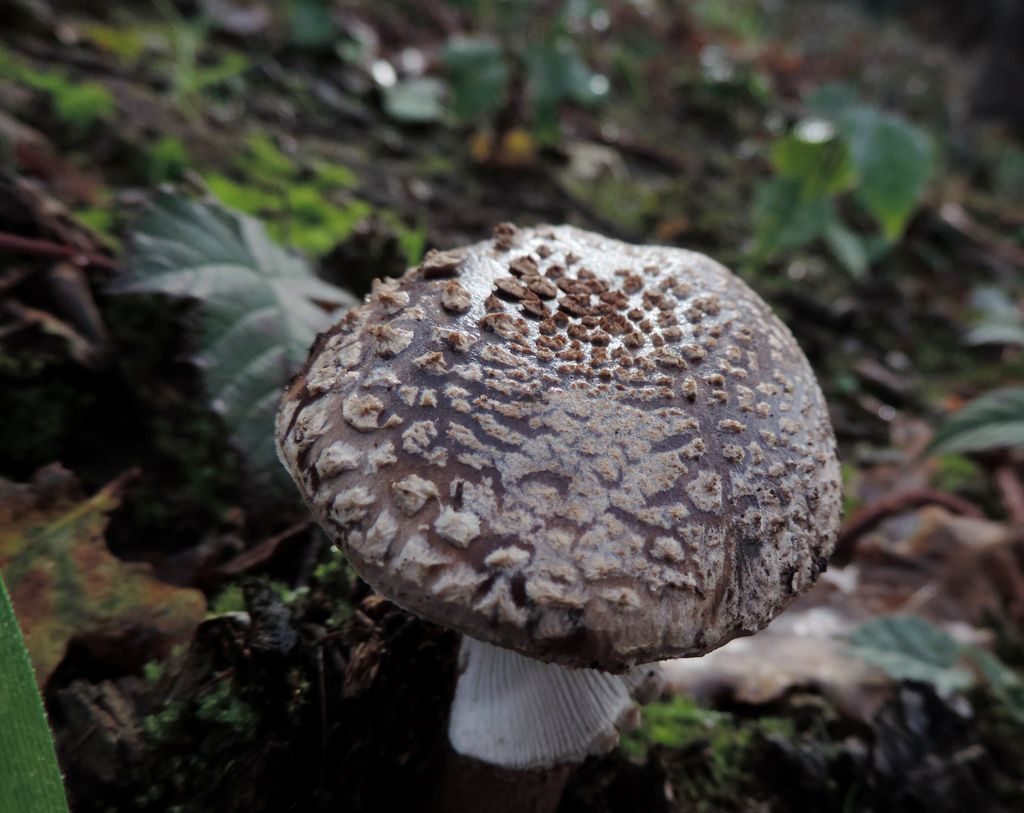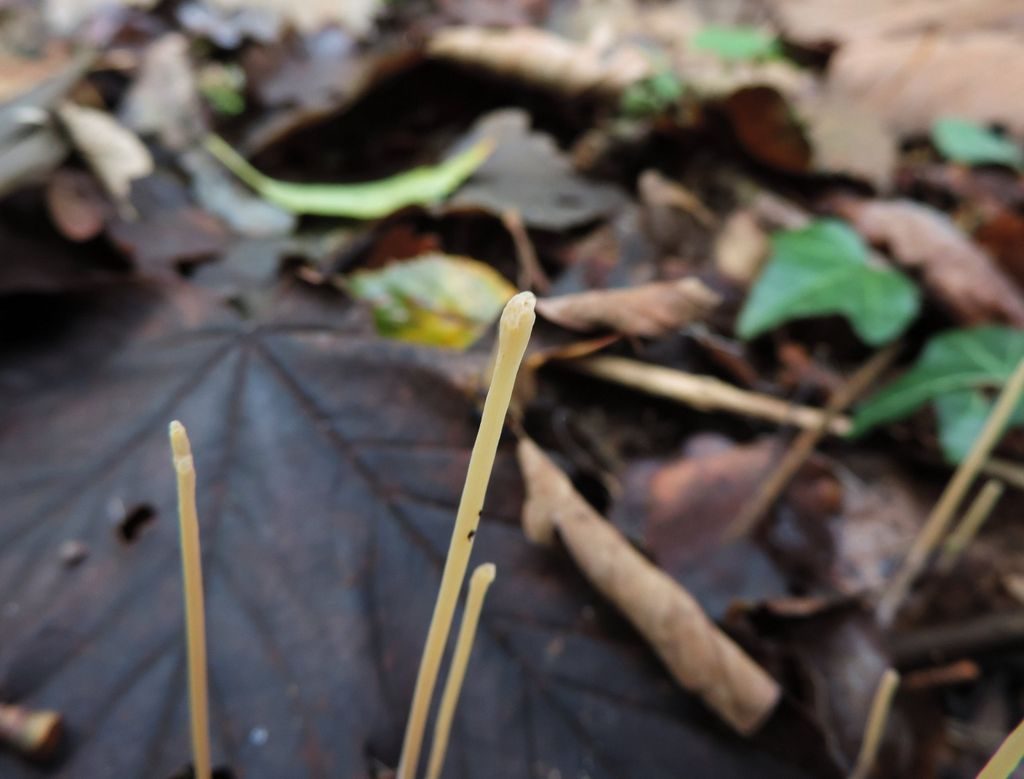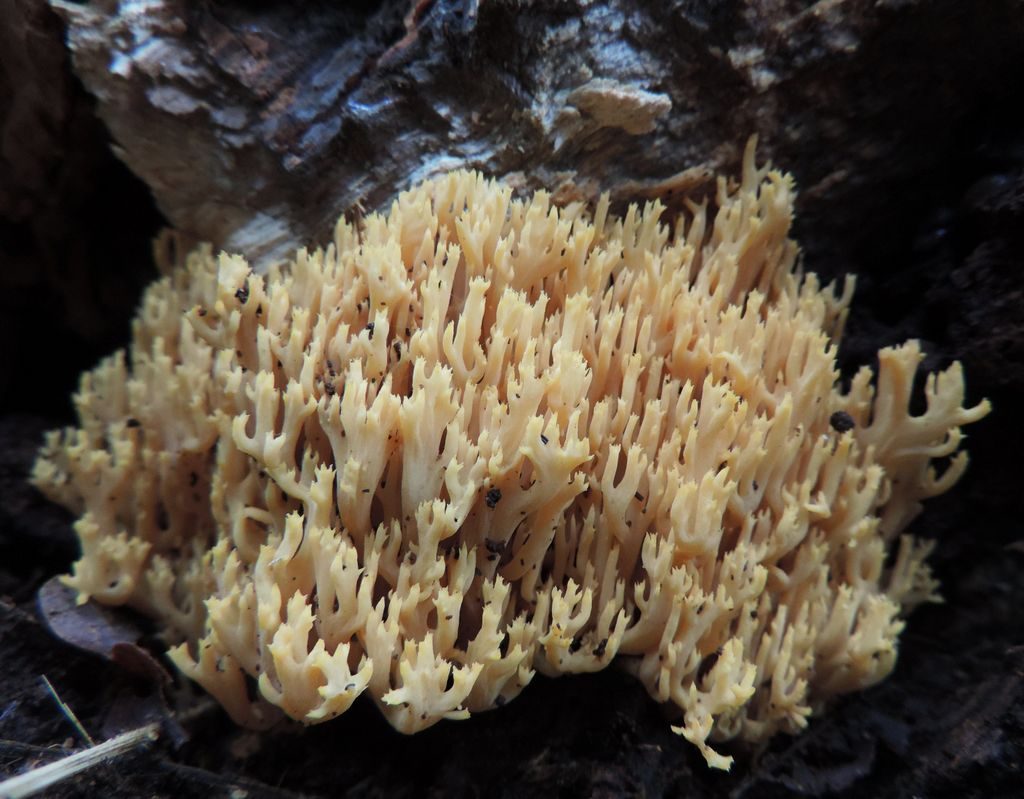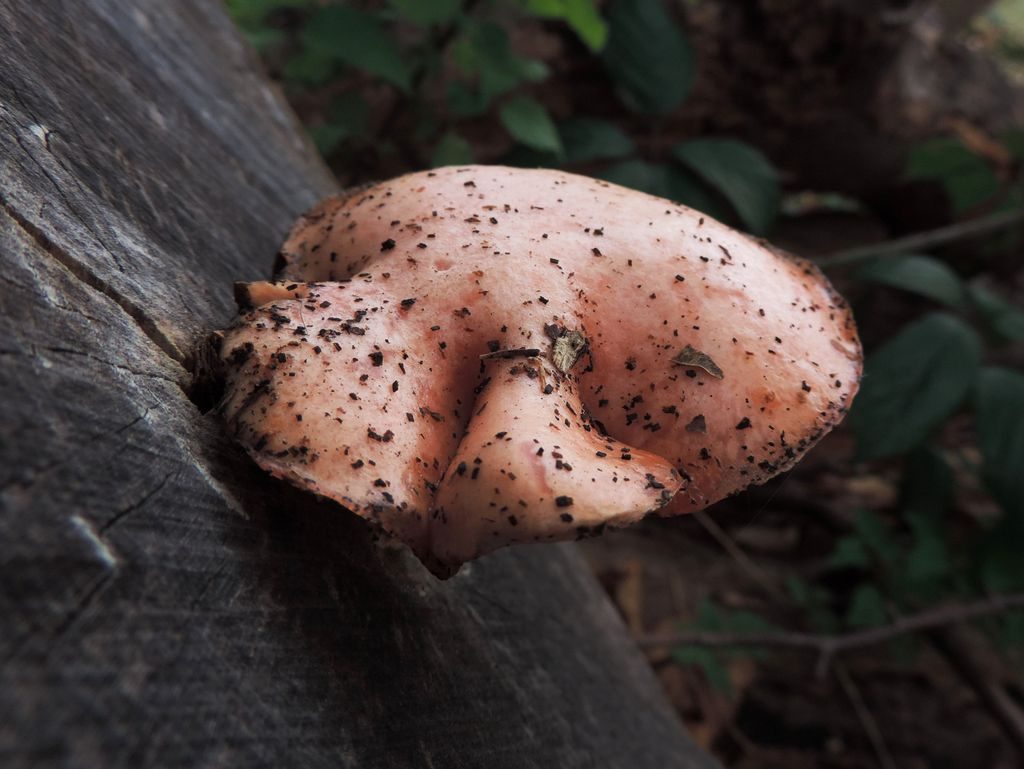Sue White led a walk round Maidenhead Thicket on Wednesday 6 November. Members gathered at the National Trust car park on the east side of the A404M, before crossing the footbridge over the motorway and heading westwards along a wide grassy ride. Sue pointed out the widely-spaced disease-resistant elms which had been planted by Butterfly Conservation volunteers to help the local population of White-letter Hairstreak butterflies. She also described the local geology, with a thin layer of more acid alluvial deposits lying on chalk, which explained the apparent anomaly of lime-loving Traveller’s-joy growing next to lime-avoiding Bracken. The route led across an open area where Larches had been clear-felled and young broad-leaved trees had been planted. Fungi seen here included Buttercap, Deceiver, False Chanterelle, Blusher, Yellow Stagshorn and the memorably-named Scurfy Twiglet. A whitish spiky coral-like fungus on the ground was identified as Thelephora penicillata, the bright pink dots of Coral Spot outlined the form of a fallen Sycamore twig and a clump of Orange Peel Fungus was found. The walk continued south-eastwards through woodland. It seemed to be a good year for the Lilac Bonnet Mycena pura. An enormous ring of Clouded Funnel fungi had an estimated diameter of about 15 metres. Lines of Trooping Funnel were also seen here and both Common and Stump Puffball were found. Large numbers of the needle-like Slender Club Macrotyphula juncea poked up through the leaf litter. Ash seedlings covered in the moss Kindbergia praelonga looked like a forest of miniature Christmas trees. The route then followed a major ride which ran northwards through some of the bigger and older trees on the common. A path on the right led to a cleared area where there was a lot of Honey Fungus. Rusty Bracket was growing on a tree, Dryad’s Saddle was found on a stump and Snowy Waxcaps were seen in a grassy area. A Fox crossed the path ahead of the group. The walk continued to Robin Hood’s Arbour, the site of an Iron Age homestead with an enclosing ditch. Tiny orange blobs on top of a stump which looked like insect eggs were identified as the slime mould Trichia decipiens. Growing out of the base of another stump was the Upright Coral Ramaria stricta. The final part of the walk was along an avenue of tall Lime trees, most of which had big clumps of Mistletoe near their tops. Growing out of the end of a cut log was a fine specimen of the Wrinkled Peach fungus. The walk was followed by lunch at the Dew Drop Inn near Burchett’s Green. The occupants of the front car had a close encounter with three Fallow Deer as they approached the pub.
Pictures by Rob Stallard

